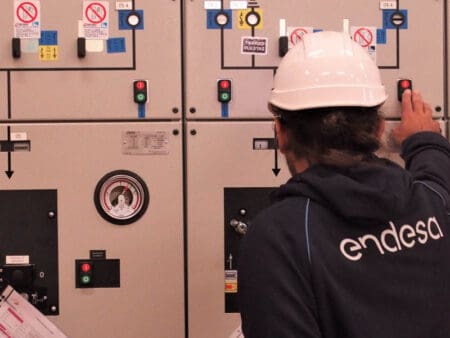
Spanish DSO Endesa is upping investment in the ongoing upgrading and digitalisation of Barcelona’s electricity infrastructure in order to transform it into the ‘digital city of the future’.
The City Plan, which has been developed with the Barcelona City Council, is focussed on the continued development and improvement of the low, medium and high voltage electricity grids, as well as ensuring quality of supply with the ongoing deployment of maintenance plans across the city’s ten districts.
These include the renovation and automation of the grid, digitalisation to enable the integration and management of distributed energy resources such as self-consumption and electric vehicles and grid strengthening to support wider electrification and the reduction of carbon emissions towards the European Union and City Council’s net zero goal.
With the need to be able to manage new energy uses such as distributed generation, self-consumption and electric mobility, a commitment to the development of smart grids is one of the company’s priorities.
Have you read?
Barcelona: Endesa preps port voltage for 2024 America’s Cup
Spain’s Transmission Grid Planning to fast track renewable integration
There are several main lines of action for the City Plan.
Regarding the development of the grids, the most notable actions in the pipeline include the renovation of part of the underground HV wiring, the renovation and expansion of 610 transformer centres in the MV grid with the installation of cabins to increase safety and remote control and 10km of new MV lines.
At the same time, the remote control of 321 transformer centres is planned. By the end of 2023, 74% of transformer centres are due to fitted with sensors to improve the availability and management of data on the grid and increase the efficiency of these infrastructures.
As part of the automation of the MV grid new remote control systems are planned, which should enable quicker location of faults and the ability to manage the network without the need to send out personnel to the location. By the end of 2023, 40% of the installations are expected to be automated.
The implementation of a Location of Breakdowns and Restoration of Supply (LARS) system is considered an essential feature of this digitalisation process for the more rapid and accurate determination of line incidents and the reaction to them. Work is currently under way on integrating historical data, maps of street works and weather forecasts amongst other aspects.
The future plans for the digitalisation and smartening of the LV grid are being developed in the Altamira project, which is piloting technologies in Catalonia and will be extended to Barcelona. The project aims to generate information across the LV grid such as power, voltage, possible energy losses and loads that may be affecting the line as well as fraud.
Another innovation underway is the creation of a network digital twin for modelling, preventive maintenance and interaction with field operators.
Finally, maintenance is ongoing, with a predictive, preventive, corrective plan for the sub-stations and distribution centres that supply the city of Barcelona, its high, medium and low voltage lines and their respective transformer centres.
In the current year, Endesa expects to invest €46 million ($50 million) in Barcelona’s grid digitalisation.








